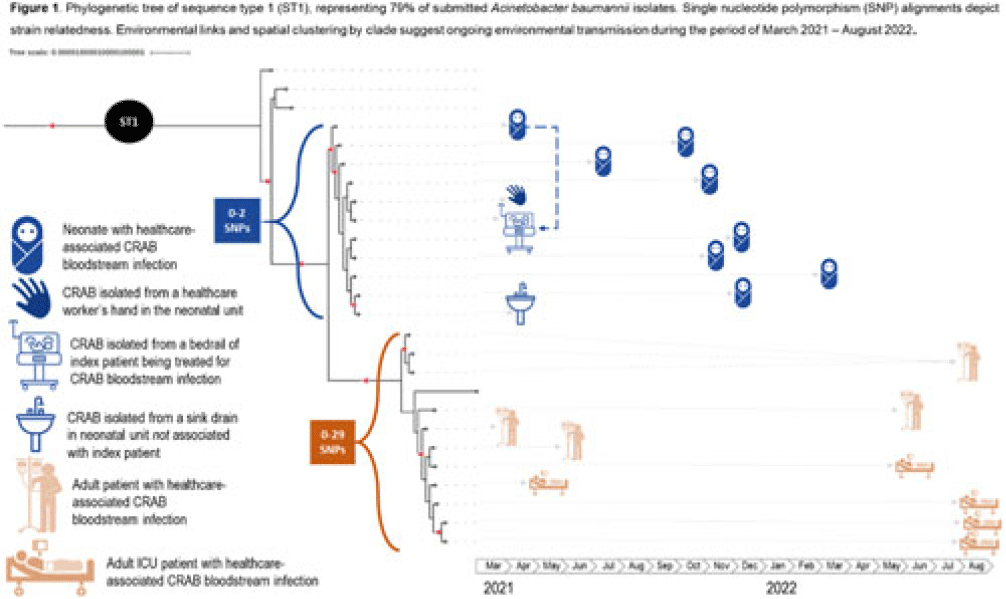762 results
The actuarial sources of the rise in unfunded liabilities in America's defined benefit plans in the 21st century
-
- Journal:
- Journal of Pension Economics & Finance , First View
- Published online by Cambridge University Press:
- 10 May 2024, pp. 1-21
-
- Article
-
- You have access
- Open access
- HTML
- Export citation

Cultural Burning
-
- Published online:
- 10 May 2024
- Print publication:
- 06 June 2024
-
- Element
-
- You have access
- Open access
- HTML
- Export citation
Healthcare personnel opinions regarding the feasibility of a risk-tailored approach to contact precautions for methicillin-resistant Staphylococcus aureus in the acute care setting
-
- Journal:
- Infection Control & Hospital Epidemiology , First View
- Published online by Cambridge University Press:
- 22 April 2024, pp. 1-3
-
- Article
- Export citation
Head and Neck Cancer: United Kingdom National Multidisciplinary Guidelines, Sixth Edition
-
- Journal:
- The Journal of Laryngology & Otology / Volume 138 / Issue S1 / April 2024
- Published online by Cambridge University Press:
- 14 March 2024, pp. S1-S224
- Print publication:
- April 2024
-
- Article
-
- You have access
- Open access
- HTML
- Export citation
Decision making capacity for treatment in psychiatric inpatients: a systematic review and meta-analysis
-
- Journal:
- Psychological Medicine / Volume 54 / Issue 6 / April 2024
- Published online by Cambridge University Press:
- 04 March 2024, pp. 1074-1083
-
- Article
- Export citation
Dangers of self-diagnosis in neuropsychiatry
-
- Journal:
- Psychological Medicine / Volume 54 / Issue 6 / April 2024
- Published online by Cambridge University Press:
- 21 February 2024, pp. 1057-1060
-
- Article
-
- You have access
- HTML
- Export citation
Factors associated with patient-to-healthcare personnel (HCP) and HCP-to-subsequent patient transmission of methicillin-resistant Staphylococcus aureus
-
- Journal:
- Infection Control & Hospital Epidemiology / Volume 45 / Issue 5 / May 2024
- Published online by Cambridge University Press:
- 18 January 2024, pp. 583-589
- Print publication:
- May 2024
-
- Article
- Export citation
Hyperendemic carbapenem-resistant Acinetobacter baumannii at a hospital in Botswana: Insights from whole-genome sequencing
-
- Journal:
- Antimicrobial Stewardship & Healthcare Epidemiology / Volume 3 / Issue S2 / June 2023
- Published online by Cambridge University Press:
- 29 September 2023, pp. s115-s116
-
- Article
-
- You have access
- Open access
- Export citation
Combating the Opioid Crisis and Its National Security Threat Through CReDO: A Multidisciplinary Solution With Disaster Medicine Implications
-
- Journal:
- Disaster Medicine and Public Health Preparedness / Volume 17 / 2023
- Published online by Cambridge University Press:
- 14 September 2023, e509
-
- Article
- Export citation
Efficacy and safety of a 4-week course of repeated subcutaneous ketamine injections for treatment-resistant depression (KADS study): randomised double-blind active-controlled trial
-
- Journal:
- The British Journal of Psychiatry / Volume 223 / Issue 6 / December 2023
- Published online by Cambridge University Press:
- 14 July 2023, pp. 533-541
- Print publication:
- December 2023
-
- Article
-
- You have access
- Open access
- HTML
- Export citation
William Allen Brown, Jr., 1934–2007: An Appreciation
-
- Journal:
- The Journal of African History / Volume 64 / Issue 2 / July 2023
- Published online by Cambridge University Press:
- 03 October 2023, p. 200
- Print publication:
- July 2023
-
- Article
- Export citation
SHEA/IDSA/APIC Practice Recommendation: Strategies to prevent methicillin-resistant Staphylococcus aureus transmission and infection in acute-care hospitals: 2022 Update
- Part of
-
- Journal:
- Infection Control & Hospital Epidemiology / Volume 44 / Issue 7 / July 2023
- Published online by Cambridge University Press:
- 29 June 2023, pp. 1039-1067
- Print publication:
- July 2023
-
- Article
-
- You have access
- Open access
- HTML
- Export citation
6 - What Do We Know about Proactive Policing’s Effects on Crime and Community?
- from Part II - The Evidence for Evidence-Based Policing
-
-
- Book:
- The Future of Evidence-Based Policing
- Published online:
- 01 June 2023
- Print publication:
- 15 June 2023, pp 107-125
-
- Chapter
- Export citation
2 - The Yamnaya Culture and the Invention of Nomadic Pastoralism in the Eurasian Steppes
- from Part I - Early Indo-European and the Origin of Pastoralism
-
-
- Book:
- The Indo-European Puzzle Revisited
- Published online:
- 29 April 2023
- Print publication:
- 11 May 2023, pp 13-33
-
- Chapter
- Export citation
Medics, Mercenaries and Miscreants — A review of Canadian Medical Assistance Teams' EMT Type 1 response to the conflict in Ukraine
-
- Journal:
- Prehospital and Disaster Medicine / Volume 38 / Issue S1 / May 2023
- Published online by Cambridge University Press:
- 13 July 2023, p. s37
- Print publication:
- May 2023
-
- Article
-
- You have access
- Export citation
Epigenetic aging and PTSD outcomes in the immediate aftermath of trauma
-
- Journal:
- Psychological Medicine / Volume 53 / Issue 15 / November 2023
- Published online by Cambridge University Press:
- 23 March 2023, pp. 7170-7179
-
- Article
- Export citation
Infection prevention and antibiotic stewardship program needs and practices in 2021: A survey of the Society for Healthcare Epidemiology of America Research Network
- Part of
-
- Journal:
- Infection Control & Hospital Epidemiology / Volume 44 / Issue 6 / June 2023
- Published online by Cambridge University Press:
- 14 March 2023, pp. 948-950
- Print publication:
- June 2023
-
- Article
-
- You have access
- Open access
- HTML
- Export citation
Molecular concordance of methicillin-resistant Staphylococcus aureus isolates from healthcare workers and patients
-
- Journal:
- Infection Control & Hospital Epidemiology / Volume 44 / Issue 4 / April 2023
- Published online by Cambridge University Press:
- 30 September 2022, pp. 578-588
- Print publication:
- April 2023
-
- Article
-
- You have access
- Open access
- HTML
- Export citation
Exploring potential reasons for the increase in the East Asian Greylag Goose Anser anser population by assessing habitat use and use of protected areas
-
- Journal:
- Bird Conservation International / Volume 33 / 2023
- Published online by Cambridge University Press:
- 19 August 2022, e22
-
- Article
- Export citation
Derivation and validation of risk prediction for posttraumatic stress symptoms following trauma exposure
-
- Journal:
- Psychological Medicine / Volume 53 / Issue 11 / August 2023
- Published online by Cambridge University Press:
- 01 July 2022, pp. 4952-4961
-
- Article
- Export citation




